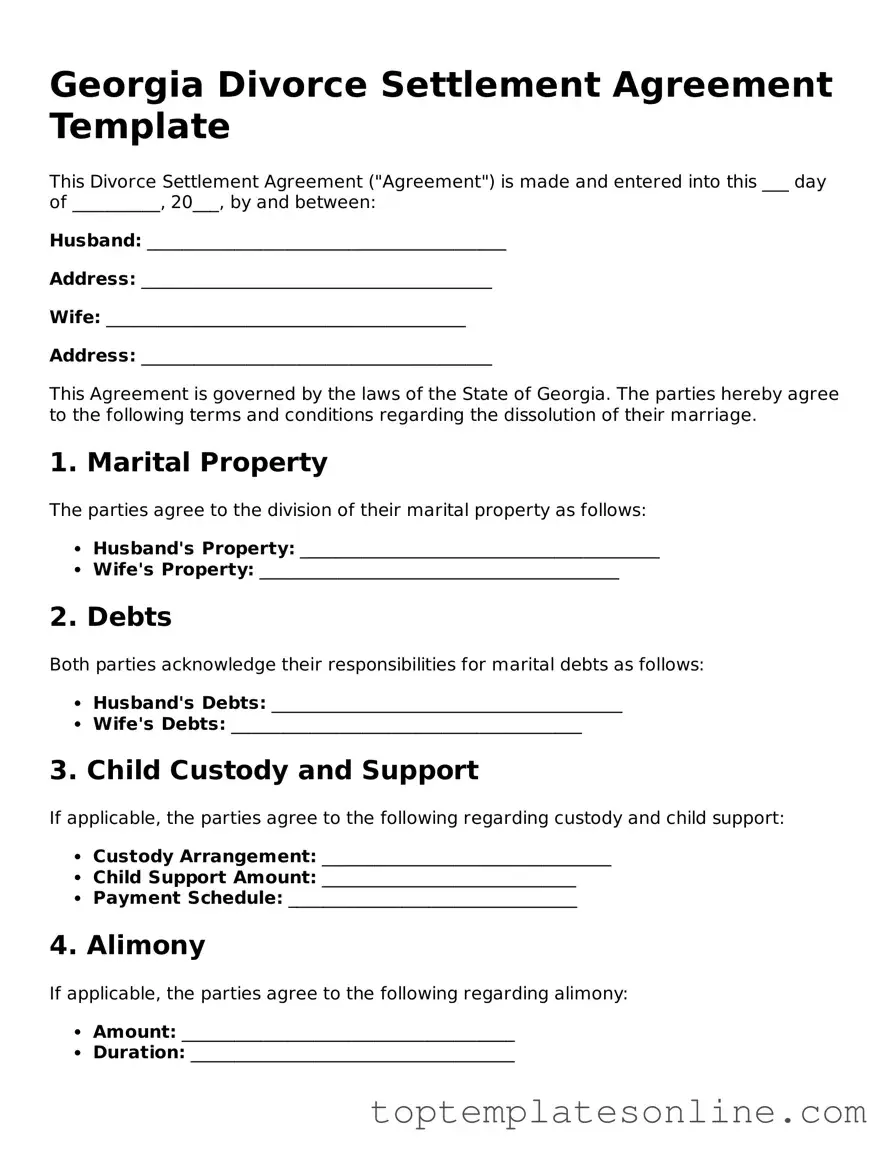When navigating the complexities of divorce in Georgia, individuals often encounter the Divorce Settlement Agreement form, a crucial document that outlines the terms of the separation between spouses. This form serves as a comprehensive agreement detailing important aspects such as the division of marital property, allocation of debts, child custody arrangements, and child support obligations. Each section of the form requires careful consideration, as it aims to reflect the mutually agreed-upon terms that will govern the post-divorce relationship between the parties. It is essential for both spouses to understand their rights and responsibilities as they fill out this form, ensuring that the agreement is fair and equitable. Additionally, the form may include provisions for spousal support, which can play a significant role in the financial stability of both parties following the divorce. By addressing these critical elements, the Divorce Settlement Agreement form helps to facilitate a smoother transition into the next chapter of life, minimizing potential disputes and fostering a cooperative environment for any children involved.
